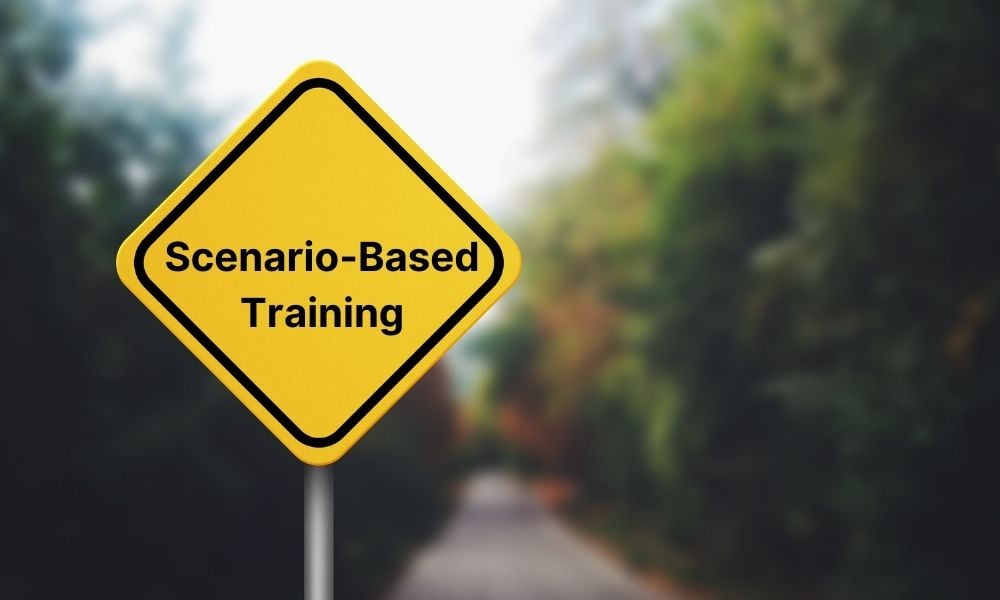Why can’t my employees do their job after a post-training assessment?
You’ve done it. After a few months of training a promising new hire class, they have completed the program.
Following all that work, you’re relieved when your new hires pass your post-training assessment and are certified to begin working on the floor.
But then, a week or two goes by and their managers come back to tell you that these new hires aren’t able to do their job properly.
It’s always disappointing when employees pass the post-training test but then are unable to perform even the simplest tasks the first week truly working on the job.
At ScreenSteps, we see companies grappling with how to navigate this issue regularly. Using our knowledge base software, we help companies close the chasm between remembering training material and job performance.
Below I’ll share two indicators for why your employees aren’t able to do their jobs after training and passing their post-training assessments. Plus, I’ll provide training and testing tips on how you can better help prepare employees for their jobs.
2 reasons your post-training assessments aren't measuring job readiness
Assessments are not a bad thing. In fact, they can be essential for measuring where employees are at in their learning.
The problem is when we don’t test the right points.
If your employees are passing the training assessments but are failing when it comes to performing their job, it might be time to re-evaluate how you measure employee preparedness.
1. They don't know how to apply their training to work
In this case, your employees have the knowledge, but they don’t know how to apply it.
Think of your training like a driver’s test.
While you may know what the road signs mean, it doesn’t mean you actually know how to yield when you come to an intersection.
That’s why states require learner’s permits and a certain number of hours spent driving with an adult. You have to spend time learning how to follow the signs’ messages by practicing.
The same thing applies to your employees. They can remember everything that you taught them in your training courses, but if they’ve never actually tried to do a task, they aren’t going to be able to do it.
When you test what employees can memorize, they only know how to repeat back that information.
If you want employees to be able to actually complete the tasks their jobs require, then you need them to be able to apply what they are learning in training and show they learned how to apply it in the assessment.
Real-life scenarios are not the same as a trivia game show. Your training should have fewer correlations with Jeopardy and more in common with The Amazing Race, meaning they need to not only know the answer but also can successfully complete the task.
Lead them through a scenario
That is why we recommend leading employees through a scenario, a concept called Scenario-Based Training.
Scenario-Based Training reduces the amount of lecture time and memorization. Instead, it focuses on creating a proactive learning environment where employees can build their confidence.
When you train with scenarios and then give the assessment as a scenario, it works in helping employees perform assignments. (Once again, just as in a driver’s license test.)
You provide them opportunities in training just like a learner’s permit does for a young driver. Then, on test day, they know to check all their mirrors before driving and use their blinkers.
They can manage the assigned tasks.

In this case, the post-training assessment is essentially an open-book exam. We aren’t testing if they know the information. Instead, we are testing if they can find and successfully apply the information in a certain amount of time.
Do they know which guides will help them? Do they know which keywords will pull up the guides for them?
They are prepared for this exam because you would have completed similar exercises during your Scenario-Based Training.
🔎 Related: What does Scenario-Based Training look like?
2. They use the training information or they forget it
It’s confession time: were you a binge studier when you were in school?
Full disclosure: I was.
Before I would take a test in college, I wouldn’t really start the studying process until 24 hours before I was going to take a test. And that was in a good case.
Typically, I would take it down to the wire and spend a couple of hours outside the testing center (yes, it is as horrible as it sounds) preparing for a test. Then I’d read the notes as I stood in line until I was admitted to take my tests.
And the truth is that some of your employees adopt this binge-studying approach to your training assessments.
This means, after the exam is over, they aren’t going to remember the information they “studied.”
Depending on how long your training course lasts, whether that is weeks or months, it could be a long time between when you taught the information and the exam. So they did what all good students do — reviewed the notes so they could pass the test.
Even more time elapses between when they take a test and when they might encounter a specific scenario.
It’s not every day that a call center agent might receive a call asking how to work a specific switch on an at-home respirator.
So how do you help your employees learn how to do their job, pass your training assessment, and remember how to perform the task months later?
How to adjust assessments for time-lapses
When the time between training and completing a task independently is a concern, then the solution is to remove the burden of remembering so much content.
Don’t make your employees memorize everything.
Instead, teach them how to find the information and test them on their ability to find it.
If you teach them to find answers, it won’t matter how much time has elapsed since the training teaches them the skills to find the correct solution.
They can find answers in your documents (Word Docs, PDFs, etc.). A better solution is to use an online searchable knowledge base where you can organize your processes in one location and easily search your resources.
That means four months down the road when the new employee, Sally, finally gets a question about how to reset the system, she won’t have to panic. Sally will have been using the knowledge base to look up answers to common questions this whole time. She’ll remember how to ask simple questions to find her answers.
By assessing employees’ ability to find the answers, it makes tests more interactive.
The assessments will ask questions like, “Using the knowledge base, find”:
- How to process an invoice
- How to schedule a dentist appointment at Dr. Calihan’s office
- What documents do you need to complete your taxes
Just like above, you can prepare for these post-training exams by using Scenario-Based Training. This will provide employees with hands-on practice in executing on-the-job assignments in a safe learning environment.
When you use Scenario-Based Training, you’re actually training employees to pass the on-the-job test when they come across a situation that they’ve never encountered before. They will know how to look for and find the information they need.
Ready to try Scenario-Based Training and assessments?
If you’re ready to adjust your post-training assessments to check ability instead of memorization, don’t throw out your training program just yet.
You probably have a ton of great training materials. But if you choose to use interactive assessments, you may need to change parts of your training approach.
By adjusting to Scenario-Based Training, you prepare employees for a Scenario-Based exam and ultimately — and most importantly — to do their jobs.
With ScreenSteps, we created a Scenario-Based Training system called Zero Memorization. We cut out memorizing and instead teach employees how to search their ScreenSteps knowledge base for the answers.
This training approach has helped companies reduce training time by up to 90%. Some companies that trained using Zero Memorization decreased the post-training support time by 84%.
Are you ready for your post-training assessments to reveal how prepared your employees are for their jobs?
Download our guide to building a Scenario-Based Training program that will better prepare your employees to handle every task.



